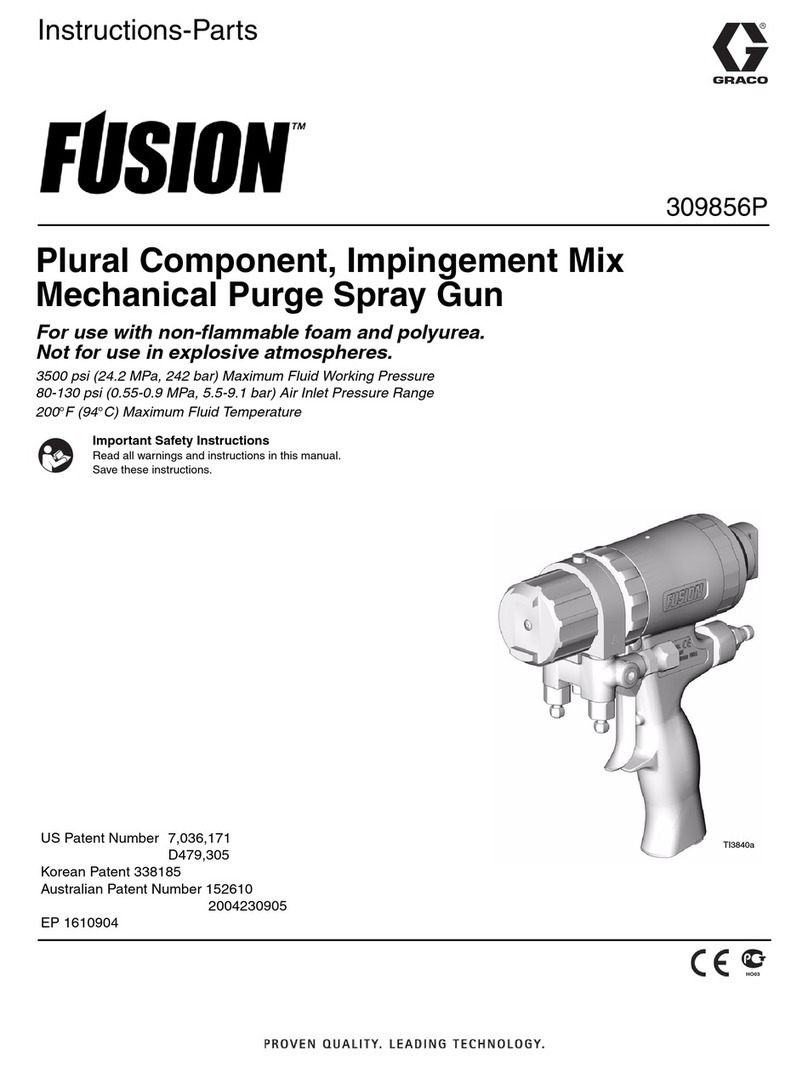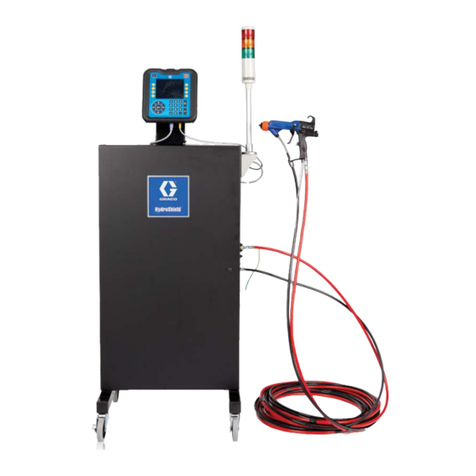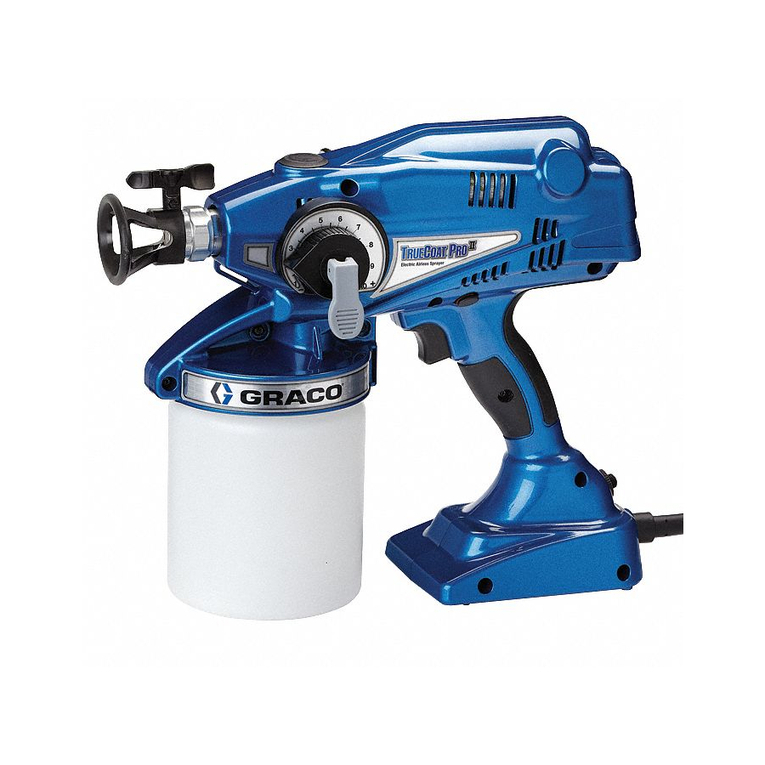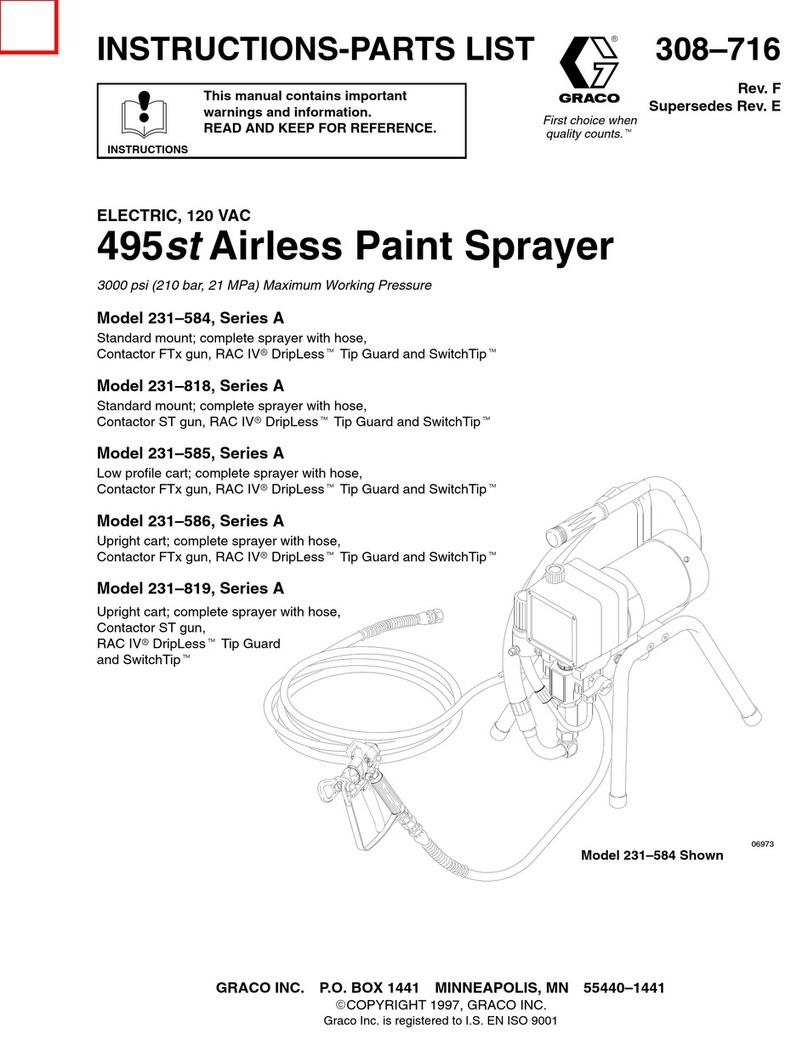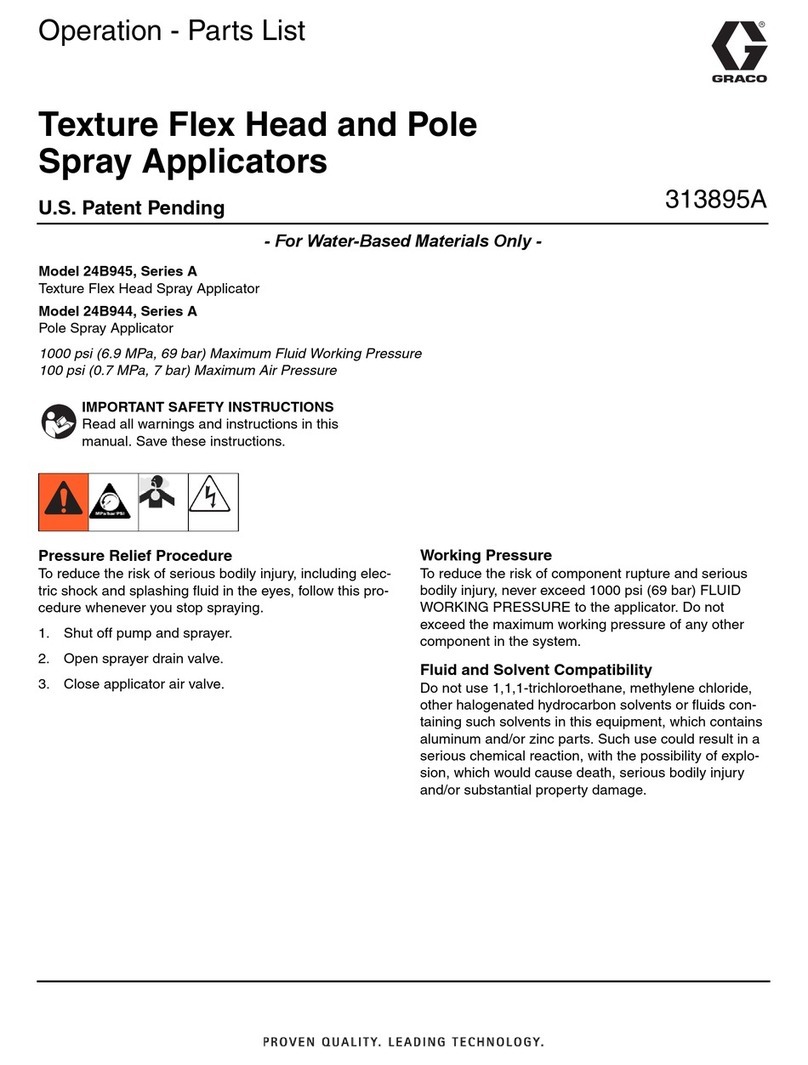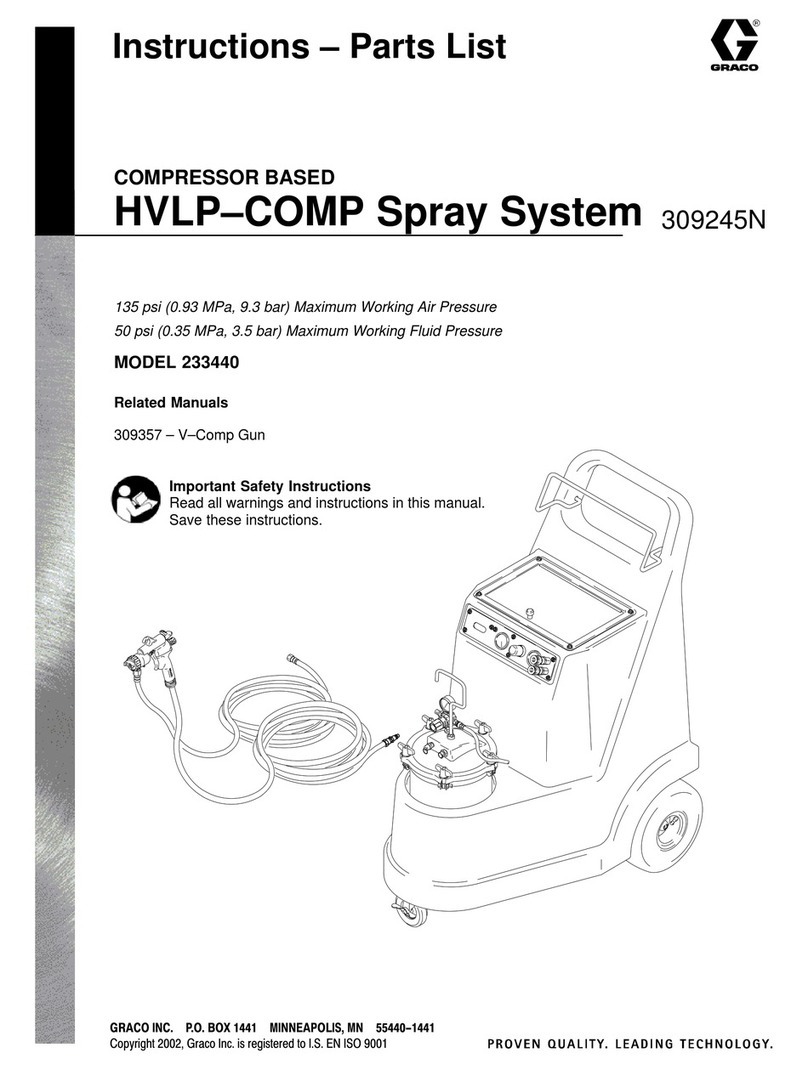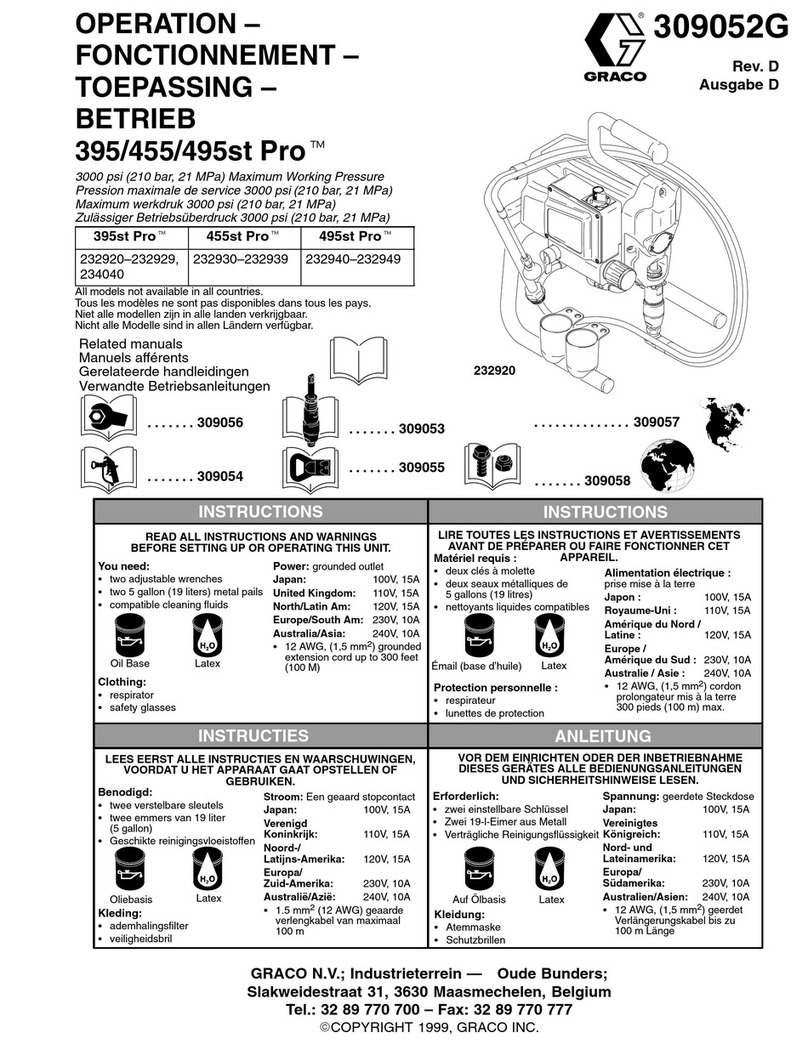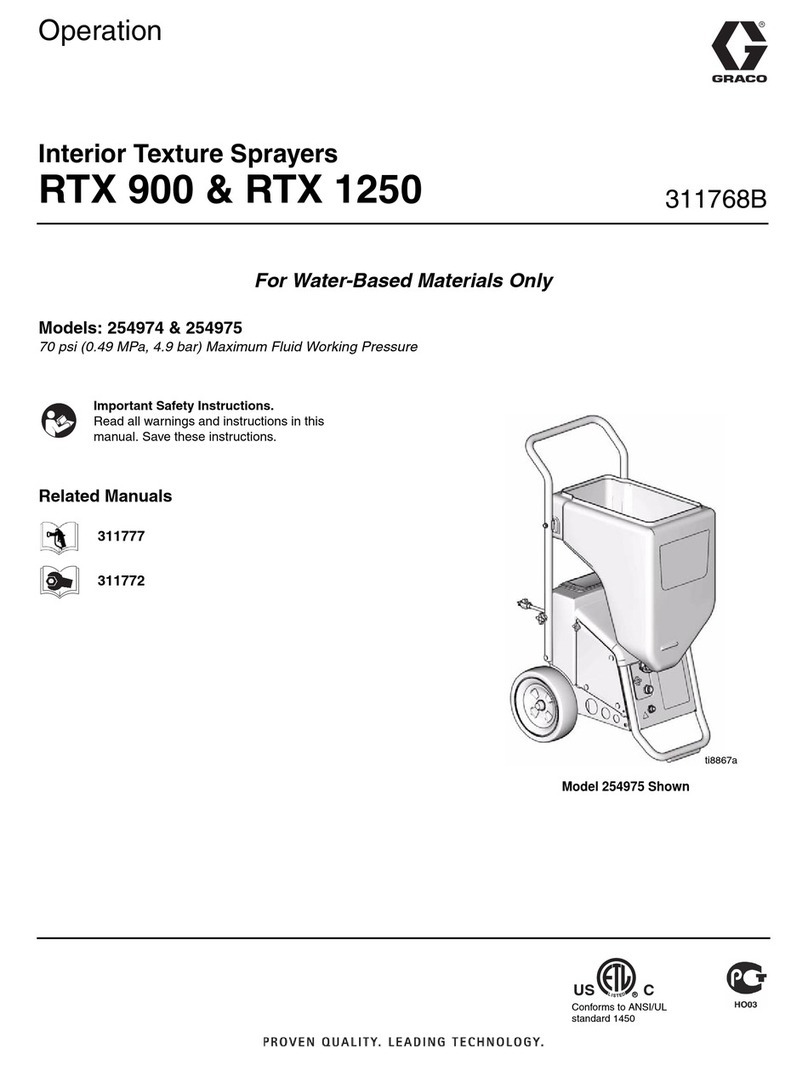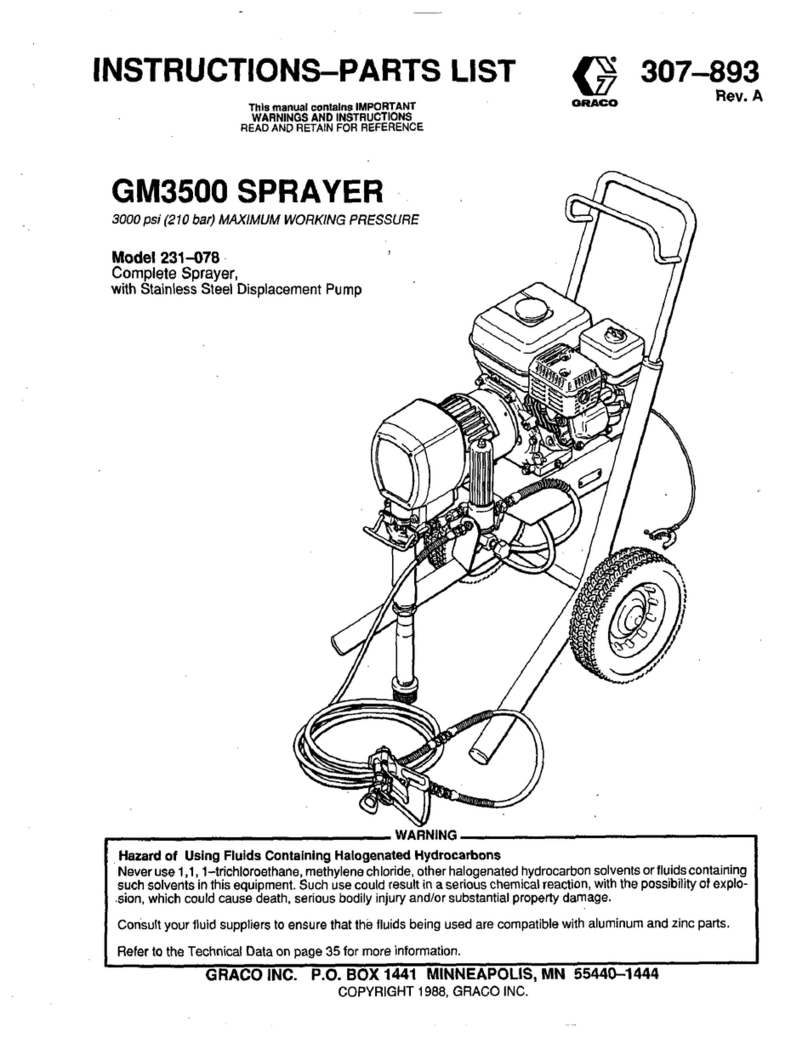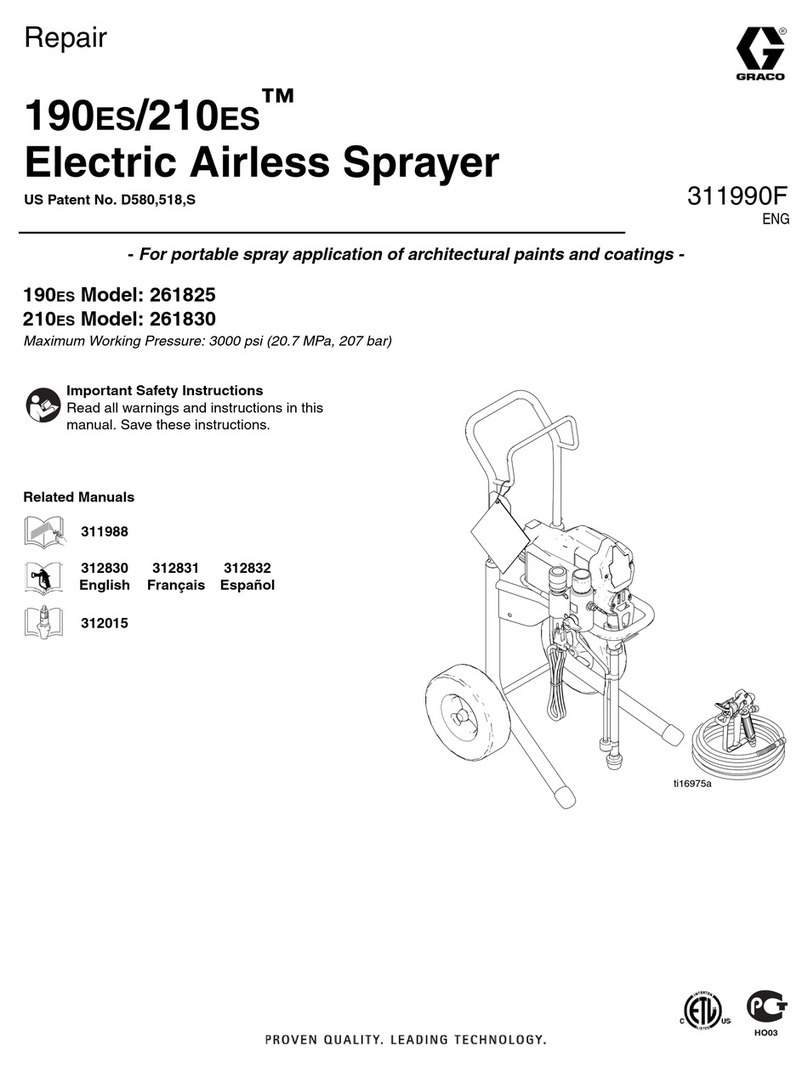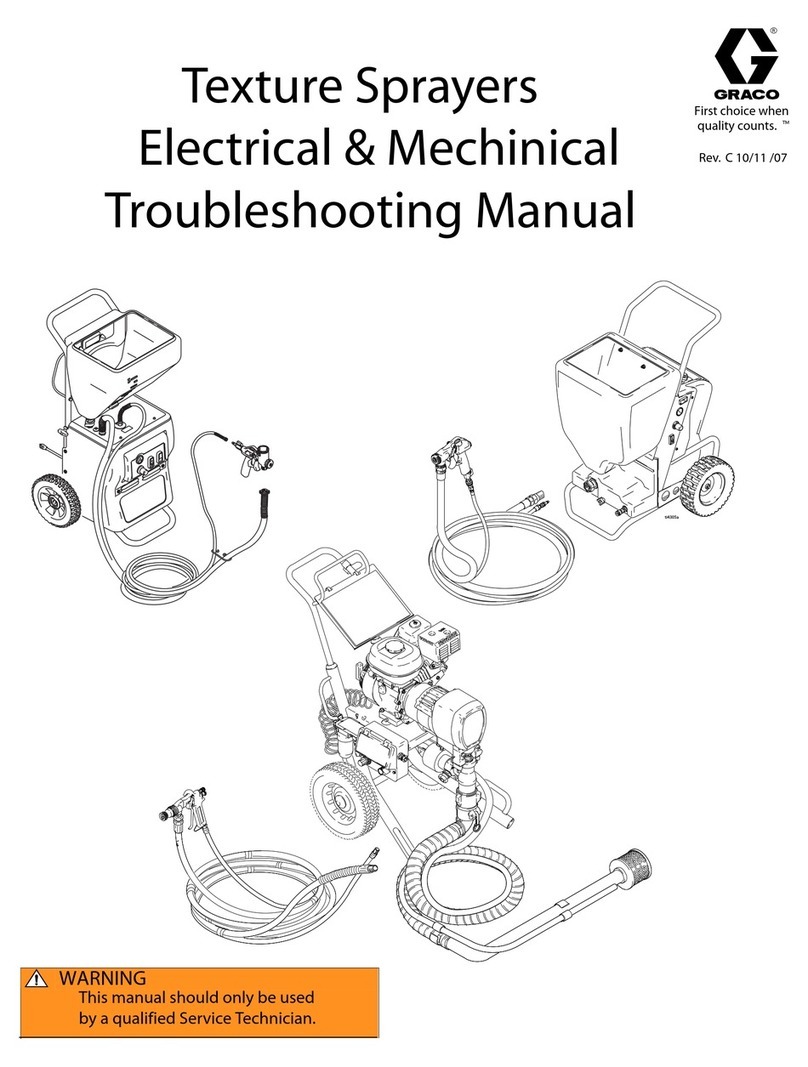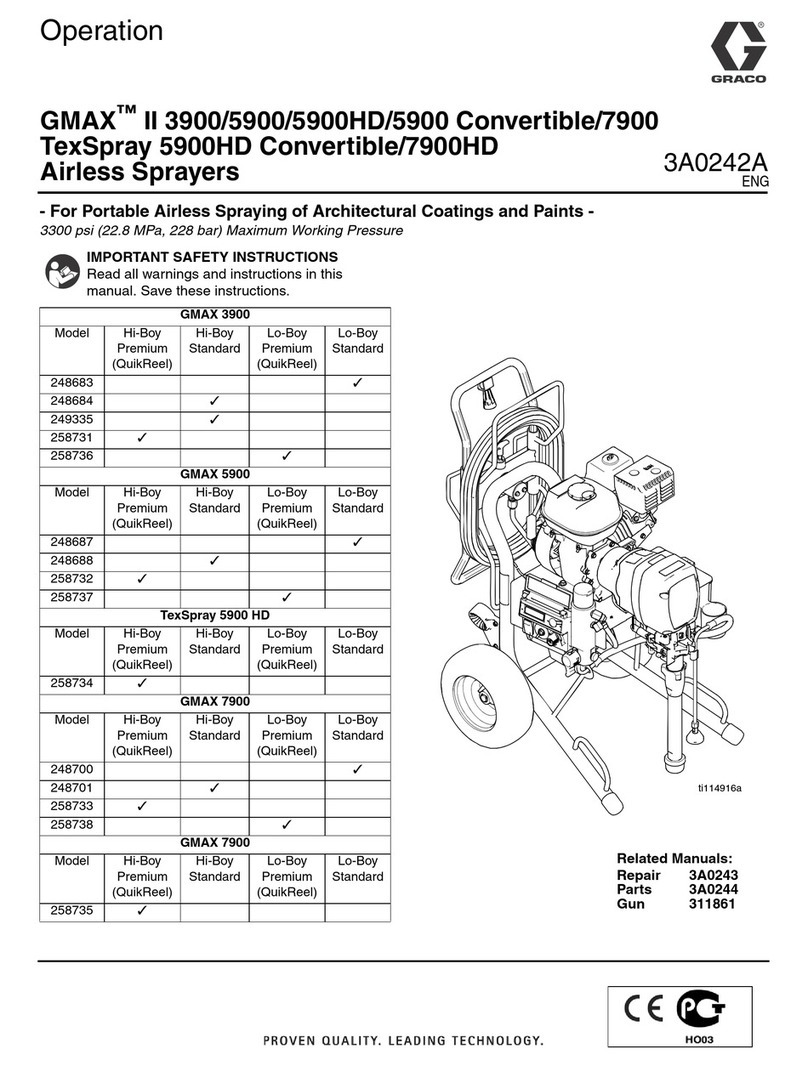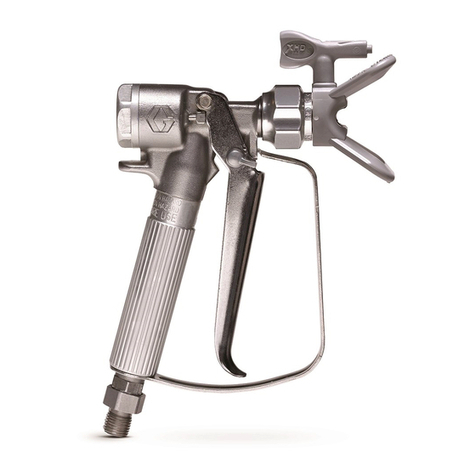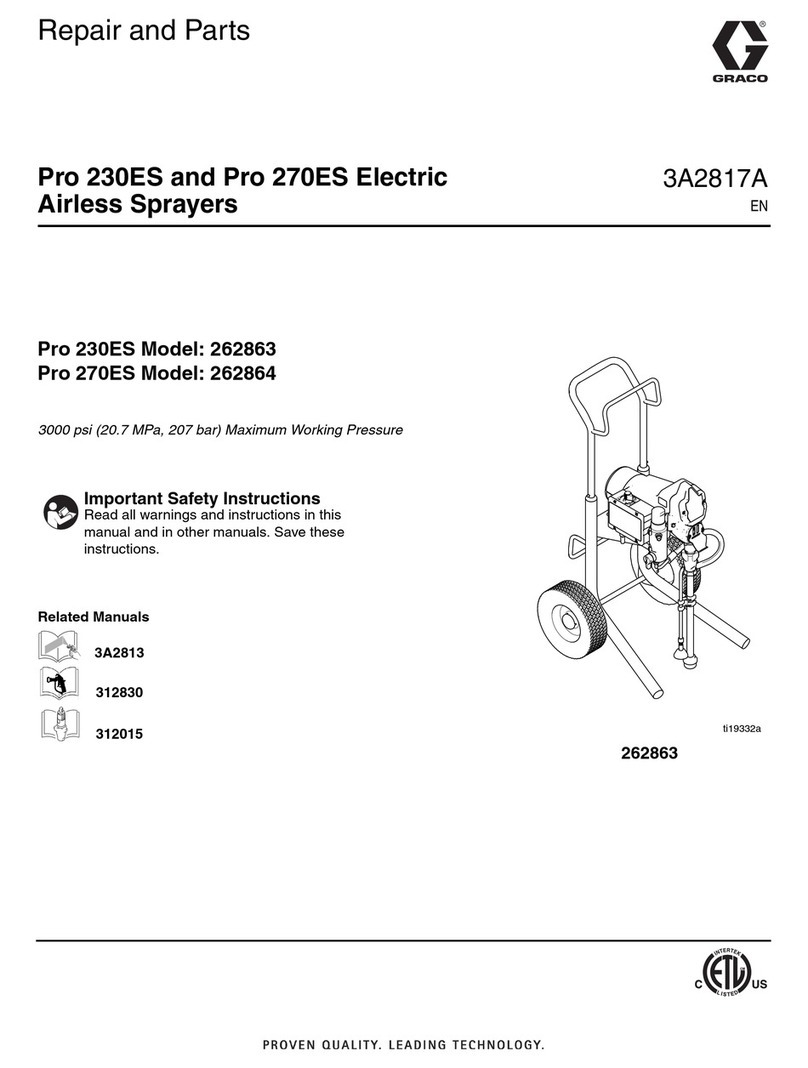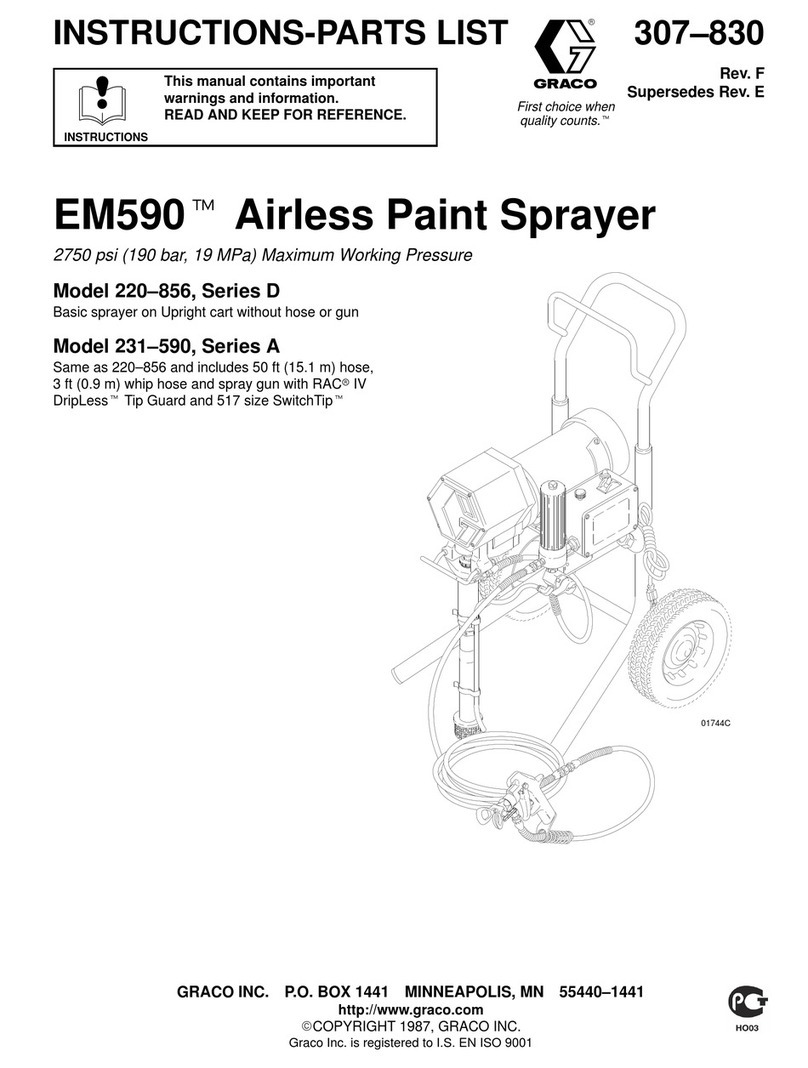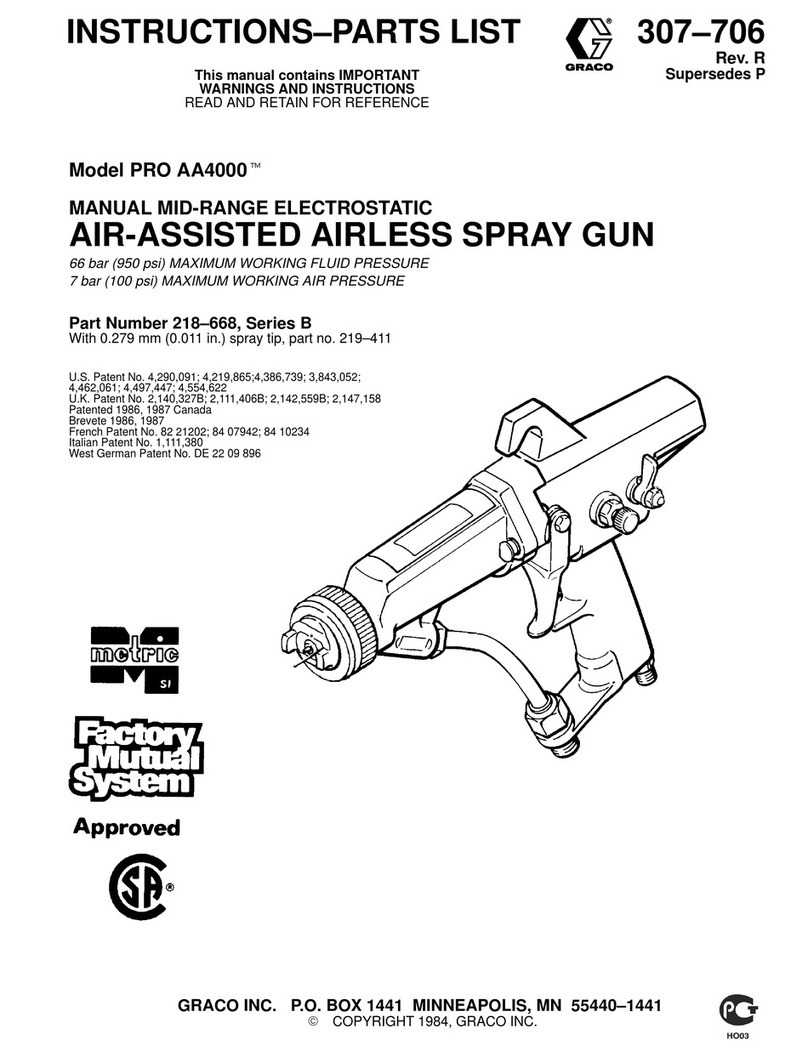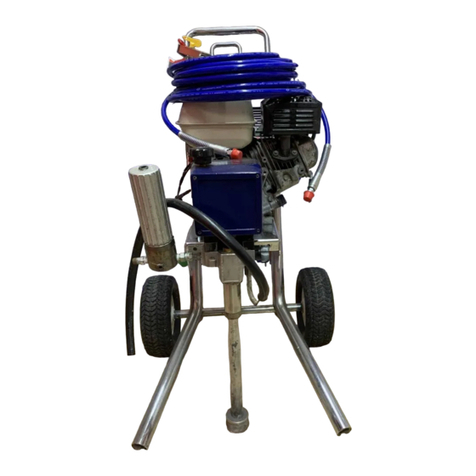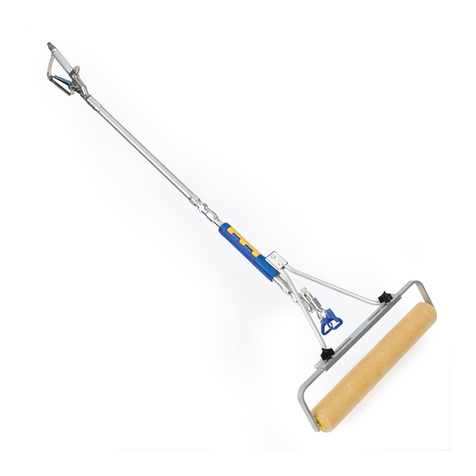
START
UP
WARNING
Hold the engine starter rope
as
it
recoils to
prevent
lt
hitting someone and causing injury, or
f. Hold the frame of the sprayer with one hand
and pull the starter rope rapidly and firmly.
Continue holding the rope as it returns.
Repeat until the engine starts.
g. Open the choke
as
soon as the engine
starts,
except in cold weather. In cold weather, leave
the choke closed for
10
to
30
seconds before
opening it to keep the engine running.
5.
Prime with texture material
suction strainer.
NOTE
If
the pump does not prime easily, remove the
a.
b.
C.
d.
Reduce the engine speed.
Put the siphon hose (la) in the prepared
texture material.
Set the Easy Spray Control to
PRIME
to load
the pump. Set the control to
SPRAY
when
material appears at the drain hose.
Trigger the gun and direct the solvent into the
solvent container, then when the texture mate-
rial appears, direct the flow into a material
drum.
If
you are ready
to
adjust the spray
pattern, do not release the trigger.
.,
6.
Fill
the pump:
a.
b.
C.
d.
Start the air compressor and adjust the pres-
sure according to the chart on page
9,
or to at
least
30
psi
(2.8
bar)
Set the Easy Spray Control
(75)
to
SPRAY
Trigger the gun for about one minute,
directing the fluid back into the solvent
container. (Air will exit the rear
of
the gun.)
Thls starts the pump and wets the hoses.
Release the trigger. The system pressure
will
be relieved automatically.
7.
To
adjust the spray pattern:
a.
b.
While triggering the gun, adjust the engine
good starting point
is
to adjust the fluid flow
RPM
to determine fluid flow and pressure.
A
until you have an
8
in
(20
cm) stream.
Holding the gun
18
to
30
in
(0.5
to
1.0
m)
from a test surface, test the spray pattern
while backing out the gun's Air Control Valve
(G)
which allows the air to atomize the fluid.
Adjust the Air Control Valve to obtain.the
desired spray pattern.
TIP
More fluid flow
=
more air,
and less fluid flow
=
less air.
c.
If
you cannot get a good spray pattern, try
adjusting the air compressor pressure or try
another spray disc and nozzle combination.
8. To prevent material
surge
at the beginning
of
a
spray pattern
a.
Always trigger the gun
fuilF
If
triggered partially, which only triggers the air
portion of the system, the pump will start and
complete the triggering action you will get a
pressurize the hoses. Then when you
blast of unatomized material.
b.
When
you
release the
gun
trigger, allow the
materlal
to
completely depressurize before
trlggerlng the gun agaln.
Failure to do this will result in spraying some
to back up into the gun air passages and
unatomized material, and may cause material
block air flow. Longer hoses and heavier
material may take several seconds longer to
depressurize.
As
you test the spray pattern, also time how
long
it
determine to depressurize the system
and keep that
in
mind
as
you are working.
/G
Fig
7
OIBOB
Use the lowest fluid pressure and the lowest
throttle setting needed. Higher settings cause
excessive drain time from the dump valve and
premature seal wear.
9.
When you stop spraying
release the gun trigger
to relieve pressure. Shut
off
the sprayer.
308-269
9
~~~
